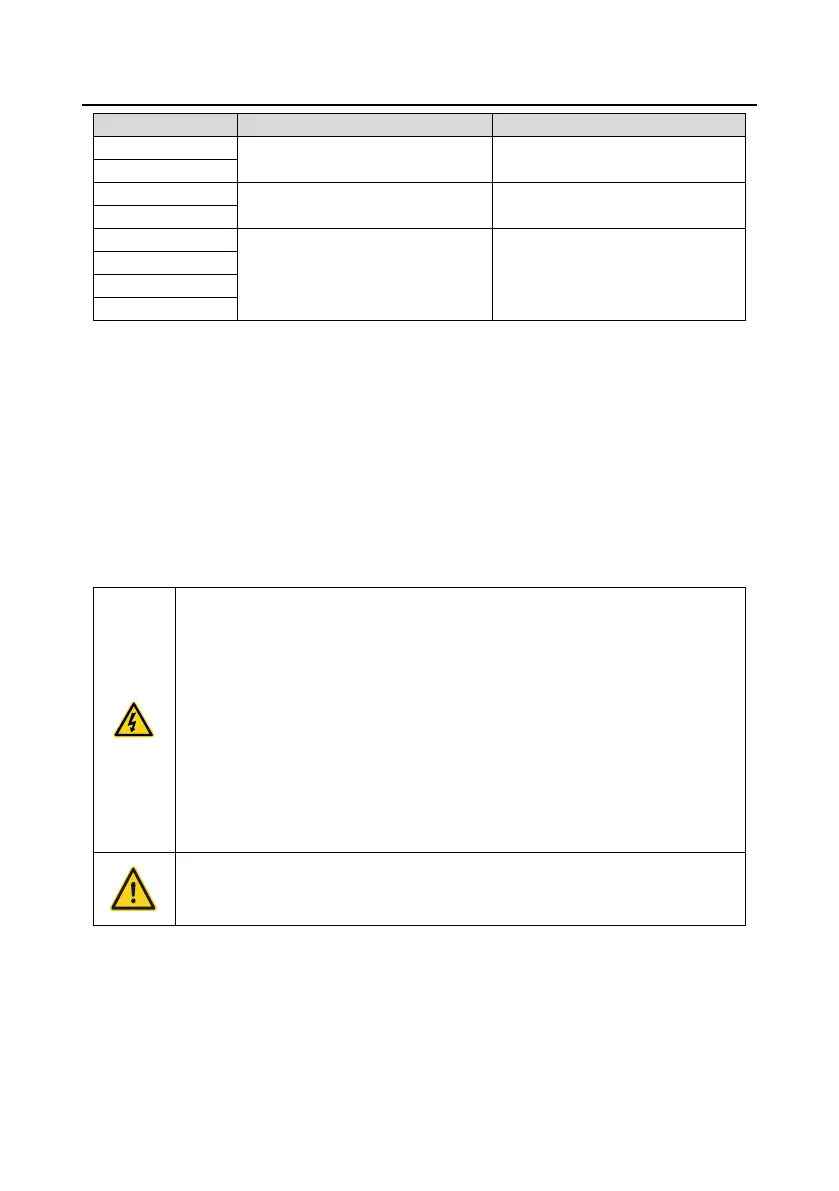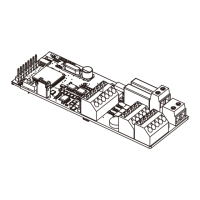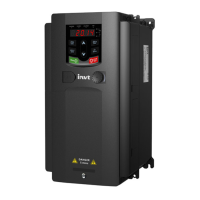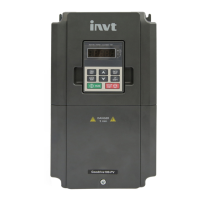Goodrive300 Series VFD Peripherial options and parts
277
Note:
1. The input EMI meet the requirement of C2 after adding input filters.
2. Above options are external, the customer should indicate when purchasing.
D.8 Braking system
D.8.1 Selecting the braking components
When a VFD driving a high-inertia load decelerates or needs to decelerate abruptly, the motor runs in
the power generation state and transmits the load-carrying energy to the DC circuit of the VFD,
causing the bus voltage of the VFD to rise. If the bus voltage exceeds a specific value, the VFD
reports an overvoltage fault. To prevent this from happening, you need to configure brake
components.
• The design, installation, commissioning, and operation of the device must be
performed by trained and qualified professionals.
• Follow all the "Warning" instructions during the operation. Otherwise, major
physical injuries or property loss may be caused.
• Only qualified electricians are allowed to perform the wiring. Otherwise, damage
to the VFD or brake components may be caused.
• Read the brake resistor or unit instructions carefully before connecting them to
the VFD.
• Connect brake resistors only to the terminals PB and (+), and brake units only to
the terminals (+) and (-). Do not connect them to other terminals. Otherwise,
damage to the brake circuit and VFD and fire may be caused.
• Connect the brake components to the VFD according to the wiring diagram. If the
wiring is not properly performed, damage to the VFD or other devices may be
caused.
D.8.1.1 AC 3PH 380V(-15%)–440V(+10%)
Goodrive300 series VFDs of 380V (≤30kW) are equipped with built-in brake units, and those of 380V
(≥37kW) need to be configured with external brake units. Select brake resistors according to the
specific requirements (such as the brake torque and brake usage requirements) on site.
